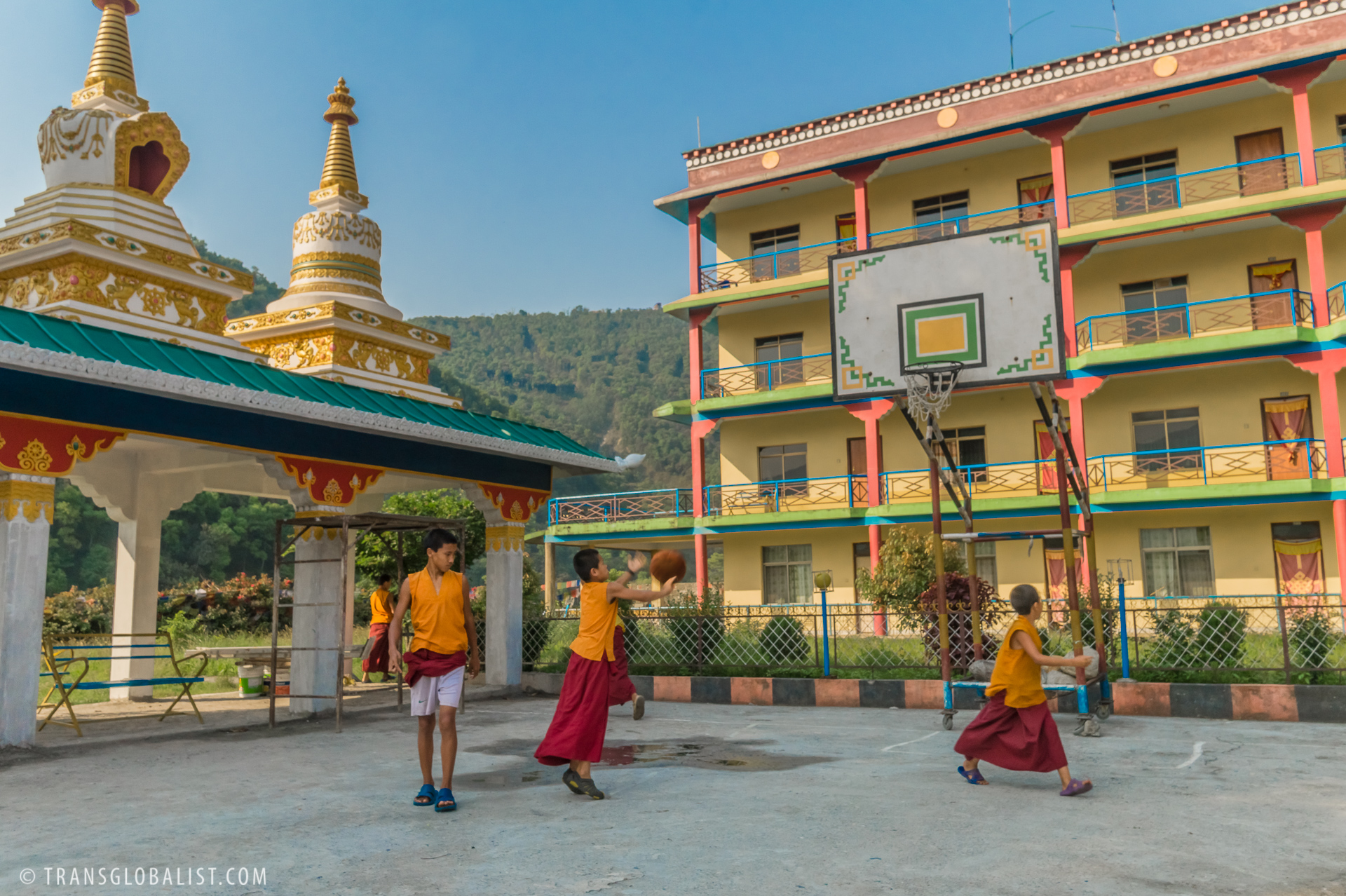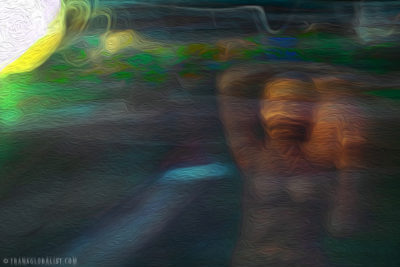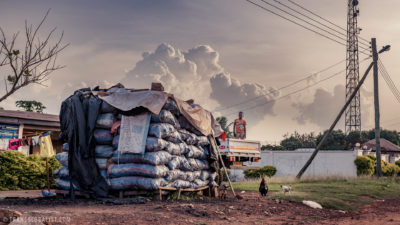[ Pokhara ]
When first-timers or bucket-listers think of Nepal, pop-culture evidence and personal anecdote both suggest conjured tableaux of mystical ice-tipped mountains, Buddhist monks, Hindu yogis and gurus, meditation classes, and long journeys with overladen backpacks leading deep into uncharted wildernesses.
In truth these ensorcellments bear little resemblance to the Nepal experienced by the vast bulk of her people, but that does little to staunch the flow of dreamy-eyed outsiders pursuing this common paracosm (a nice word I’m trying to learn, which refers to a world with—potentially—an elaborately evolved set of languages, geographies, and histories, all them completely imaginary). As with most stereotypes, this fantasy doesn’t appear ex nihilo—but rather grows directly from common (mis)understandings of reality.
In our case, this suggests Nepal does offer scaled-down, flawed, less Romantic versions of the stylized, imaginary Buddhist monks of Hollywood tradition. And that matters because, well, because it does—because life tends to deal coups de grâce where least expected, and because sometimes we want to fight back against such finality.
*****
Enter Pema Ts’al Monastic Institute, in the small village of Hemja…a few kilometers outside of Pokhara. I paid an overnight visit to this well-known local monastery to join the Tibetan Buddhist monks in a puja, performed for the son of a dear friend back in Texas. “Puja” translates roughly as “prayer,” and an event like this for Buddhists is similar to a Priest celebrating a Mass dedicated to a particular person.
In another parallel to Catholicism (Roman and otherwise), the monks perform their pujas daily, in a partially fixed cycle tide to the (lunar) calendar year. They share this annual liturgical rhythm with Hinduism, from which Buddhism springs. Also like Hinduism, Buddhist iconography is a riot of color, and a fascinating mix of symmetry and its opposite.
[The whole process is, in most ways, a perfect tonic to the romanticized, imaginary paracosm of the misguided Spirit-Seeker crowds—a culture equal parts spirit, pragmatism, and crass quest for financial support from comparatively well-to-do foreigners. Tithe, baby, tithe!]
I arrived the previous afternoon and stayed in one of the monastery’s dormitories, in order to make the next day’s 5:30am start time a little more palatable. The room was serviceable, but had I not long since been disabused of the aforementioned, Disneyfied, notional Dharma, the wafting stench of poorly plumbed piss would quickly have corrected that oversight.
As I wandered about to find the dining hall and enjoy the evening’s spartan-yet-satisfying meal, I suffered (unknowingly) the visit’s only sour note (well, unless you include the lingering sour-scent of urine): the indignity of having my bag looted by a precocious, three-foot tall primate far more clever than I. Some cheeky, hirsute bugger managed to rifle through my backpack—carefully stowed inside a locked room with bars on the windows—by using the bedspread to pull it within reach.
Like I said: cheeky bugger. Lesson learned? Never turn your back on a monkey.
The next morning’s puja, however, was a delight: scents and spirits and clanging cymbals mingling in the still air of the prayer hall, rising as one into the clear morning Himalayan air. As metaphors for, and manifestations of, the human spirit go, the free-ringing musical clash of Buddhist offerings seemed particularly apt.
And to you, P, wherever you may roam: namaste, and peace.
Pema Ts’al Puja






